This is an excellent series of children’s publications catering for a mid-primary to early secondary school audience. They are ideal for parents to introduce their young families to important aspects of our history and traditions. The chapters are invariably quite brief and deal with a single aspect. They include quotes from Defence Force veterans and young children, multiple illustrations and photographs, and directive questions. Included are pages of activities, a short glossary, index, and bibliography that contains online resources, acknowledgements as well as notes on the respective author.
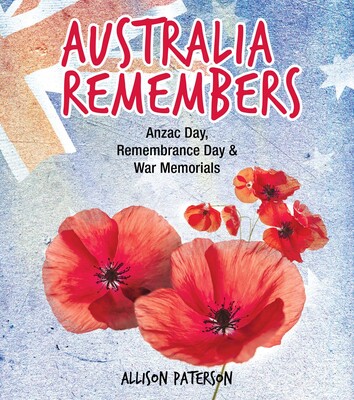
Commencing with ‘Living in Australia’ today, the difference between commemoration and remembrance is examined. The origin, services and parades of Anzac Day are discussed, as is Remembrance Day and the significance of the red poppy. The memorials around Australia, the Australian War Memorial and those overseas are comprehensively covered. The text concludes with a reminder that we are the custodians of the legacy of the First World War soldiers.
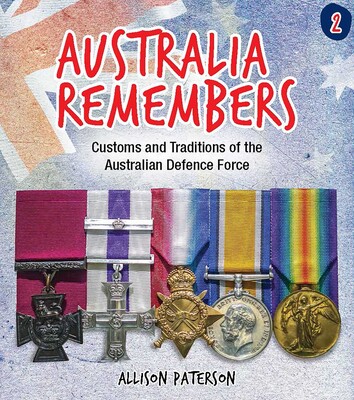
From the different services, various uniforms and ranks, flags, ceremonial parades, saluting, badges and medals, and our past – all aspects of customs and traditions and their need within the ADF have been examined and very simply explained.
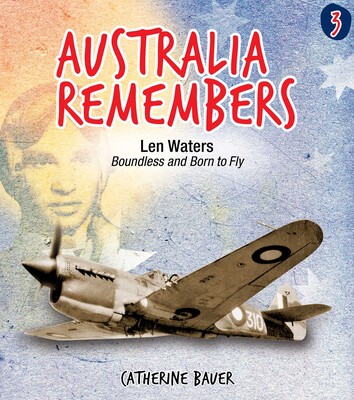
Len (named after Leonardo da Vinci) Waters was born in 1924 in northern New South Wales. His grandfather George was one of more than 1000 Australian First Nation people to serve in World War I, and his deeds were an inspiration to the young children.
To avoid having the family broken up and becoming part of the Stolen Generation, the family moved to Queensland. Len knew all about thermal and how birds used them; he also built model aeroplanes. Finishing schooling at 13, Len worked rig-barking trees and clearing land. 1942 saw Len join the Royal Australian Air Force (as a British subject of ‘pure European descent’). He applied to become a pilot in April ’43 and gained his wings in July 1944. He was a fast learner, always near the top of his class, and was most popular among his peers.
Len was the only First Nation person to become a fighter pilot in World War II, flying his Kittyhawk ‘Black Magic’ in over 100 reconnaissance and strafing missions from Neumfoor Island and other South Pacific locations. He did not engage in aerial combat during his wartime flying.
Len was one of over 2000 First Nation people who participated in World War ll for whom their past service did not give full citizenship rights or recognition of their skills. Len could not follow his dream of starting his own airline. Buried with full military honors, during his internment at St George Cemetery in Queensland in 1993, nine RAAF F/A-16 Hornets paid the ultimate overhead tribute with one aircraft pulling out to create the ‘Missing Man’ formation. The five-story Len Waters Building was opened at RAAF Williamtown in 2020.
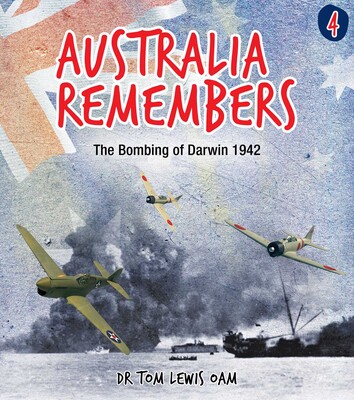
At 10:00am on Thursday 19 February 1942 188 Japanese carrier-based fighter aircraft attacked Darwin Harbour which held 65 Allied warships and merchant vessels at the time of the raids. At noon a further 54 bombers struck making the daily total of 681 bombs hits. The raids 12 caused chaos in Darwin with approximately 290 deaths and 400 wounded, and most essential services including water, electricity and oil reserves being badly damaged or destroyed. Fears of an imminent invasion spread and there was a wave of refugees, as some of the town’s civilian population fled inland whilst convoys left the Harbour. Twenty military aircraft were destroyed; eight ships at anchor in the harbour were sunk. The air attacks on northern Australia continued until November 1943, with a making a total of 93 – 64 of those being on Darwin.
The Japanese Navy wanted to invade Australia but was overruled by the Imperial Japanese Army on grounds that it would require too many troops to do so. Japanese raids continued on northern coastal towns and installations until 1944. The Allies made a concerted effort to build effective defences from which they subsequently raided Japanese-held terrain.
There is still evidence today of the damage inflicted, and museums have preserved events and memorabilia. The Darwin Cenotaph was erected outside Government House in 1921 to commemorate World War One, was relocated to the Civic Centre in 1970 and moved to its present location in Bicentennial Park in 1992.
On 1 December 1942, HMAS Armidale was attacked and sunk by aircraft in the Timor Sea. It took until the 78th anniversary of the heroic actions of 18-year-old Teddy Sheean on that day before he was eventually posthumously awarded the Royal Australian Navy’s first and Australia’s 101st Victoria Cross. The Collins class submarine HMAS Sheean was commissioned on 23 February 2001.
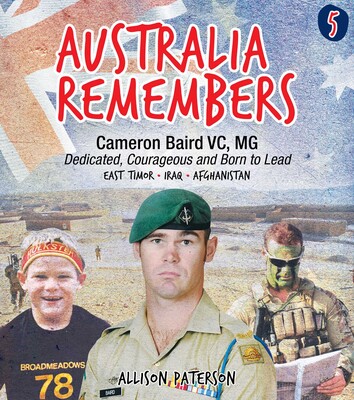
This volume opens with a discussion of the importance of commemoration – of those who have served, our fallen and those currently serving. It includes an Honor Roll for those lost in Afghanistan.
Cameron Baird was born in Burnie, Tasmania in 1981. A very keen and capable sporting enthusiast, he captained the Victorian Schoolboys Australian Rules team that won the National Championship. A shoulder injury in 1999 put paid to a promising sporting career. His grandfather served in the AIF (World War 1) and his father in the 2nd AIF (World War ll). Cameron joined the Army in 2000 and was adjudged the Most Outstanding Recruit in his platoon during his initial training before being posted to 4th Battalion (Commando), Royal Australian Regiment (4RAR).
He saw service in East Timor and Iraq, before leaving the Army in 2004 due to injury. Cameron rejoined 4RAR in 2006 (it was renamed 2 Commando Regiment in 2009). Four tours followed in Afghanistan, and in 2007 he was awarded the Medal for Gallantry for his actions in a search and clearance operation of a Taliban stronghold.
On 22 June 2013, whilst fighting in Ghawchak village, Uruzgan province in Afghanistan he lost his life – on 13 February 2014 Cameron was posthumously awarded the Victoria Cross for Australia. His citation reads ‘. . . for most conspicuous acts of valor, extreme devotion to duty and ultimate self-sacrifice at a village as a commando team leader’.
Cameron will not be forgotten. The ADF forward operational air support base near Dubai, UAE was renamed Base Baird in 2014. The Recruit Course Award that Cameron won at Kapooka was in 2016 renamed the Cameron Baird, VC, MG Award.
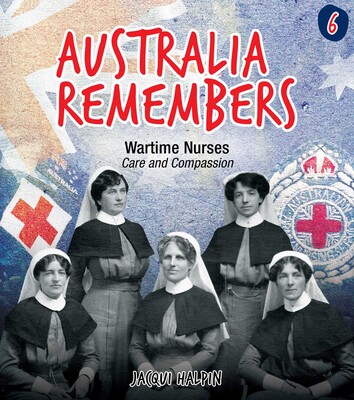
In January 1900, fourteen Australian nurses sailed to the Boer War in South Africa. The Australian Army Nursing Service Reserve was formed in 1903. With the outbreak of the First World War, the Australian Army Medical Corps absorbed the Australian Army Nursing Service (AANS). The nurses served in hospital ships, in Great Britain, France, India and Greece as well as in Voluntary Aid Detachments. They served with distinction under trying and dangerous conditions – numerous individuals were won bravery awards. The year following the 1918 Armistice meant another year of service as the world battled the deadly Spanish Flu epidemic.
Over 4000 nurses served in the Second World War. They staffed hospitals, casualty clearing stations, convalescent homes, hospital trains, in the Middle East, the Mediterranean, Southeast Asia, Sri Lanka, the Pacific, Britain and Australia. In 1940 the RAAF Nursing Service established a medical air evacuation transport unit to manage military casualties in New Guinea and the Pacific Islands. The RAN Nursing Service was established in 1942 and in May 1943 the Australian Hospital Ship Centaur was torpedoed on its way from Sydney to New Guinea with nine nurses lost and only one surviving. Numerous nurses became Japanese prisoners of war for up to three years.
There were two more name changes to come – the Royal Australian Army Nursing Service (1948) and finally, the Royal Australian Army Nursing Corps in 1951. 150 nurses served in Viet Nam from 1962 to 1973, and subsequently have been active in Australian peacekeeping missions, natural disaster relief both nationally and internationally, floods, bushfires and very recently, COVID – 19.
Currently more than 800 nurses serve in the ADF either as full-time members or Reservists. Irrespective of their unit titles over the past 120 years, our nurses have proudly served members of the military of all nations in times of conflict and hardship.
The publisher should be truly proud of these wonderful publications.
Reviewed for RUSIV by Neville Taylor, November 2022
Contact Royal United Services Institute about this article.






